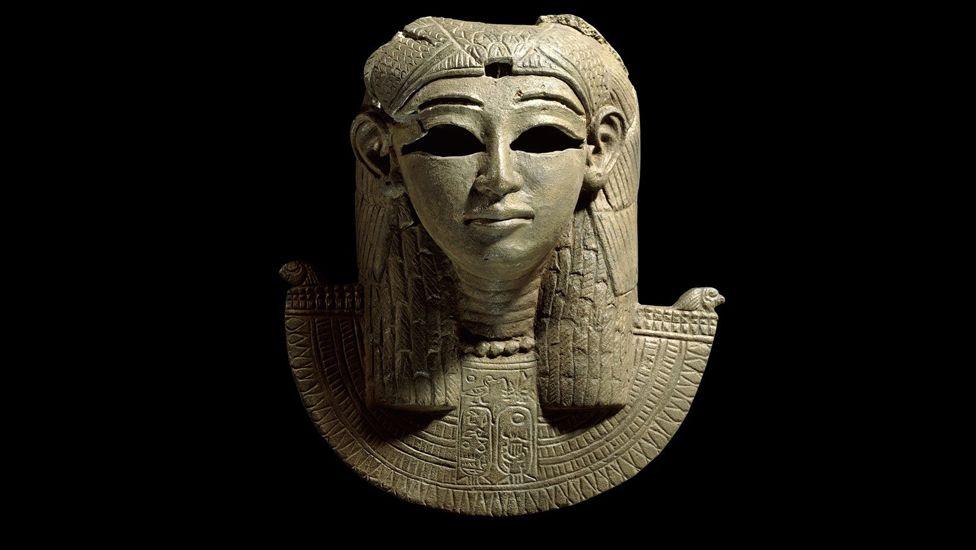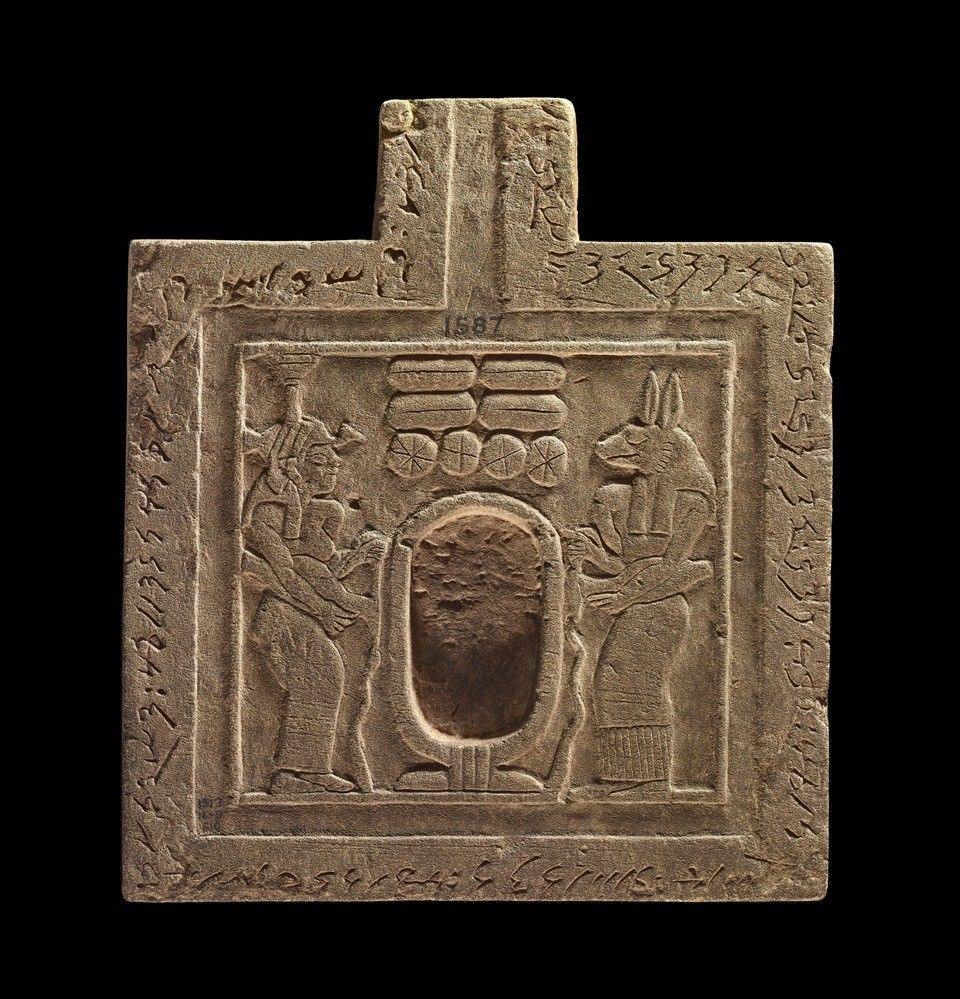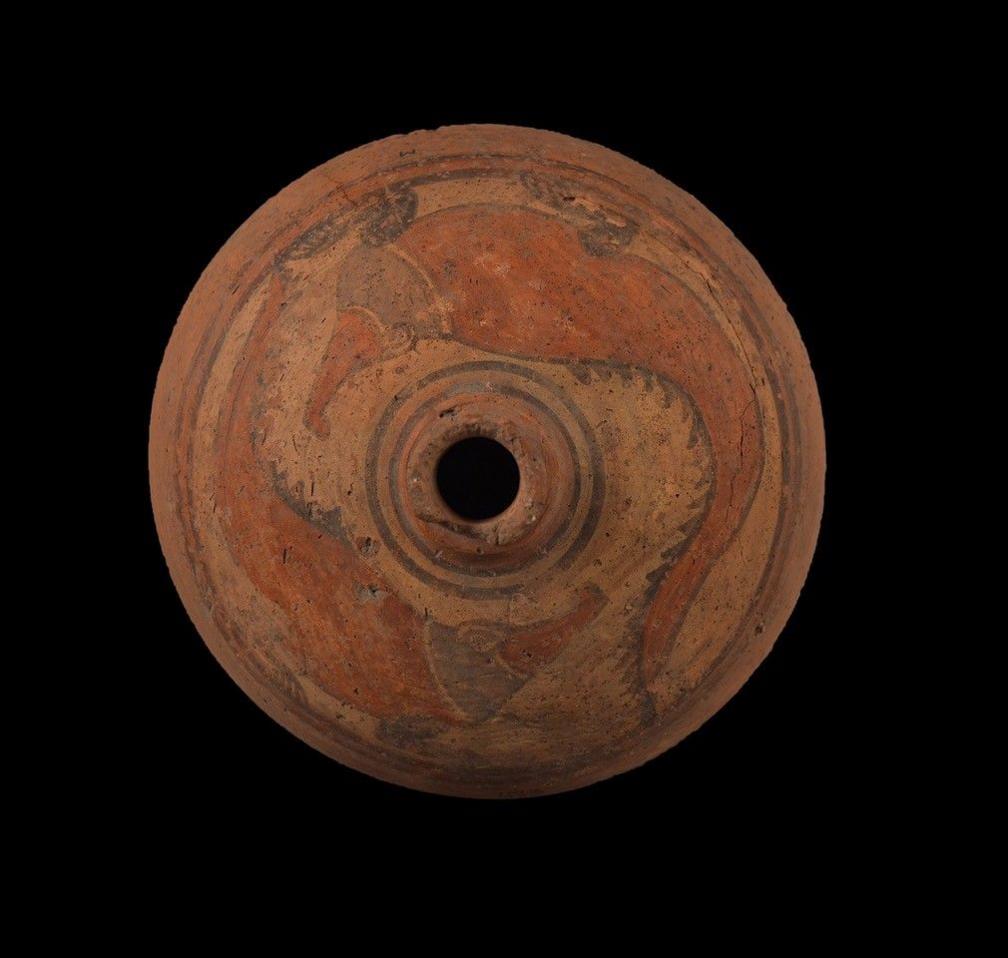Treasures of ancient Sudan to feature in Stirling exhibition

The bronze figurehead would have been fitted to the prow of a ceremonial boat
- Published
The bronze figurehead of a goddess is one of the highlights of a new exhibition featuring Sudan's ancient Kingdom of Kush, going on display in Stirling.
It is the first time the nine items, which have been loaned to the Stirling Smith Art Gallery and Museum by the British Museum, have been shown in Scotland.
The exhibition also features a painted grave jar adorned with Nile crocodiles and a sandstone offering table.
The museum said the show would highlight "an empire of extraordinary wealth, artistry and power that rivalled Rome and Egypt."

A sandstone offering table is also featured in the exhibition
The museum said the bronze figurehead would have been fitted to the prow of a ceremonial boat that housed a statue of a god and was carried between temples.
The figurehead may represent the goddess Isis and was commissioned by King Arnekhamani, a Kushite king who built temples in central Sudan.
The clay jar was placed in a grave next to a wealthy individual and featured crocodiles, an animal "both feared and revered across Kush".
Ancient Sudan was situated between central Africa and the Mediterranean.
The Kingdom of Kush, which spanned 1,200 years from 800 BC to 400 AD, stretched from the Blue Nile to the Levant at its height, making it one of the most extensive empires of all-time.
Its rulers included Taharqo, known both for his military campaigns against the Assyrians and his temple building across Sudan and Egypt, and Amanirenas, thought to be the queen who stood against Roman expansion.

A clay jar decorated with crocodiles was placed in a grave next to a wealthy individual
Project curator Dr Loretta Kilroe, from the British Museum, said: "Sudan has a fascinating history and a rich cultural heritage that is often overlooked. With ongoing conflict in the region, it is vital that this heritage is protected.
"In collaboration with Sudanese communities, this exhibition will highlight ongoing protection and conservation efforts, as well as bringing Sudan's fascinating history to life for new audiences."
The exhibition also includes a display featuring objects contributed by members of the Sudanese diaspora living in Scotland, such as clothing, embroidery, and basketry.
The exhibition opens on 23 October and will run until 22 February next year.